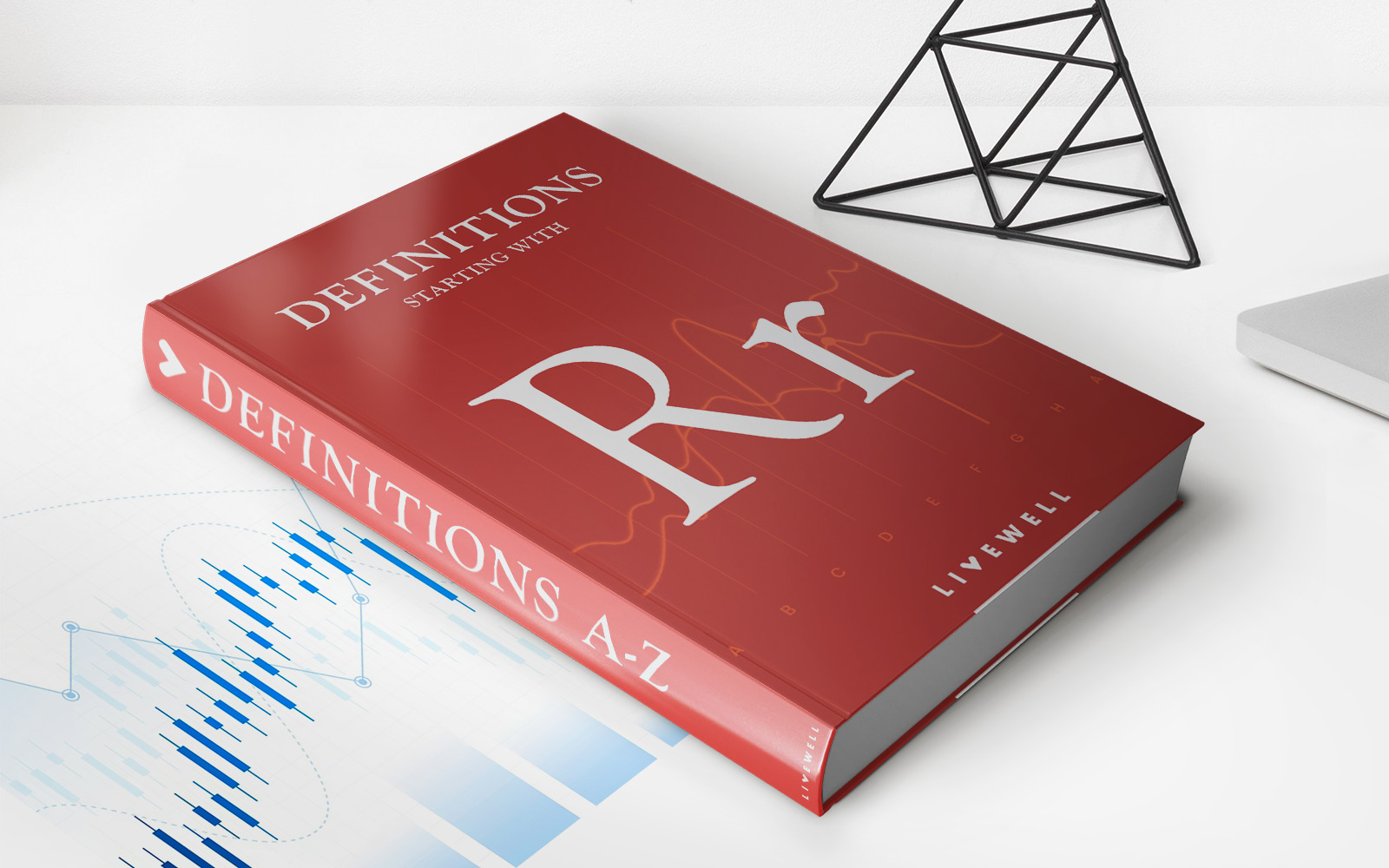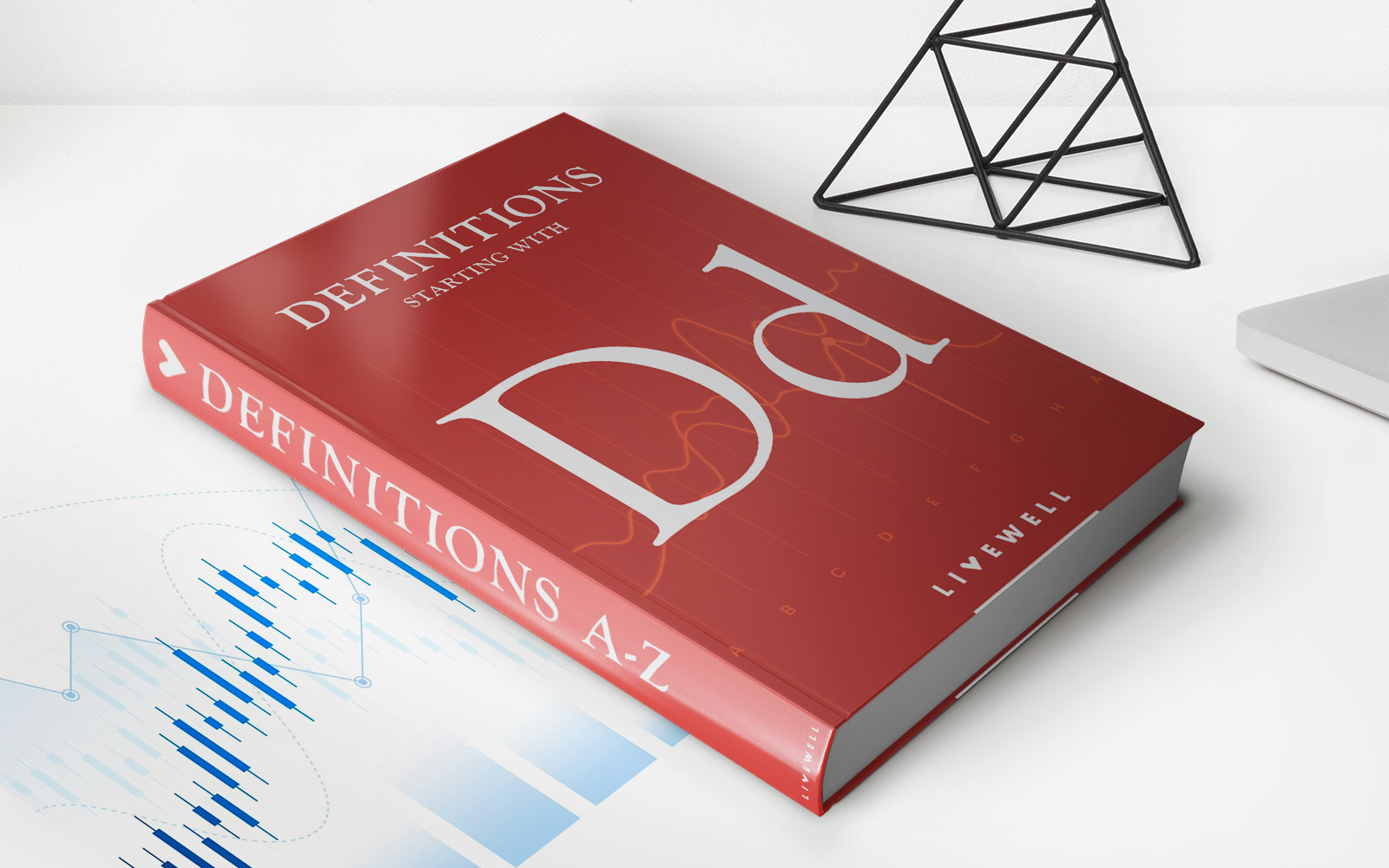Home>Finance>What Is Justin’s Retirement Savings Contributions Credit?


Finance
What Is Justin’s Retirement Savings Contributions Credit?
Published: January 10, 2024
Learn about the Justin's Retirement Savings Contributions Credit and how it can help you save on taxes. Discover valuable finance tips for maximizing your retirement savings today.
(Many of the links in this article redirect to a specific reviewed product. Your purchase of these products through affiliate links helps to generate commission for LiveWell, at no extra cost. Learn more)
Table of Contents
- Introduction
- Understanding the Retirement Savings Contributions Credit
- Eligibility Criteria for the Retirement Savings Contributions Credit
- Calculating the Retirement Savings Contributions Credit
- Claiming the Retirement Savings Contributions Credit
- Limitations and Restrictions of the Retirement Savings Contributions Credit
- Benefits of the Retirement Savings Contributions Credit
- Conclusion
Introduction
When it comes to planning for retirement, every dollar saved can make a significant difference in the long run. Whether you’re a low-income earner or someone who wants to maximize your retirement savings, understanding the various tax credits and incentives available to you is essential. One such credit that is worth exploring is Justin’s Retirement Savings Contributions Credit.
Named after Senator Justin Hale, who championed its creation, Justin’s Retirement Savings Contributions Credit is a tax credit designed to encourage low-to-moderate-income individuals and families to save for retirement. This credit provides a valuable opportunity to reduce tax liabilities while simultaneously building a nest egg for the future.
In this article, we will delve deeper into the intricacies of Justin’s Retirement Savings Contributions Credit, including its eligibility requirements, calculation process, and the benefits it offers. By understanding how this credit works, you can make informed decisions to optimize your retirement savings strategy.
Understanding the Retirement Savings Contributions Credit
The Retirement Savings Contributions Credit, commonly known as the Saver’s Credit, is a tax credit intended to incentivize low-to-moderate-income individuals and families to save for retirement. This credit provides a dollar-for-dollar reduction in the amount of federal income tax owed, which can result in significant savings for eligible individuals.
The Saver’s Credit is available to individuals who contribute to a qualifying retirement plan, such as a 401(k), Individual Retirement Account (IRA), or a similar employer-sponsored plan. It is important to note that the credit is non-refundable, meaning it can only be used to offset tax liabilities and cannot result in a tax refund if the credit exceeds the tax owed.
The credit amount is based on a percentage of the eligible contributions made to the retirement plan, with a maximum limit set for each filing status. The percentage ranges from 10% to 50%, depending on the taxpayer’s adjusted gross income (AGI) and filing status. Higher percentages are applicable to individuals with lower incomes, providing greater incentives for those who need them most.
It is essential to differentiate between the different credit rate categories to understand how the credit is determined. The Saver’s Credit has three separate rate categories: 50%, 20%, and 10%. Taxpayers with an AGI below the income thresholds for each category will qualify for the corresponding credit rate. Let’s take a closer look at the income thresholds for each category:
- The 50% credit rate: This rate applies to individuals or married couples filing jointly with an AGI below $19,500 (for the tax year 2021).
- The 20% credit rate: This rate applies to individuals or married couples filing jointly with an AGI between $19,501 and $21,500 (for the tax year 2021).
- The 10% credit rate: This rate applies to individuals or married couples filing jointly with an AGI between $21,501 and $34,500 (for the tax year 2021).
The Saver’s Credit is a valuable tool for individuals who are looking to save for retirement while also reducing their tax obligations. By taking advantage of this credit, eligible taxpayers can significantly boost their retirement savings and enjoy the benefits of compounding interest over time.
Eligibility Criteria for the Retirement Savings Contributions Credit
To qualify for the Retirement Savings Contributions Credit, individuals must meet certain eligibility criteria set by the Internal Revenue Service (IRS). These criteria ensure that the credit is targeted towards individuals and families with low to moderate incomes who are actively saving for retirement. Let’s explore the key requirements for eligibility:
- Filing Status: The Saver’s Credit is available to individuals who file as Single, Married Filing Jointly, Head of Household, or Qualifying Widow(er) with Dependent. It is not available for individuals filing as Married Filing Separately.
- Age Requirement: Taxpayers must be at least 18 years old to qualify for the credit. Additionally, individuals who are claimed as dependents on someone else’s tax return are not eligible for the credit.
- Gross Income Limits: The eligibility for the Saver’s Credit is based on adjusted gross income (AGI). For the tax year 2021, the income thresholds for each credit rate category are as follows:
- – 50% credit rate: AGI below $19,500 (for individuals and married couples filing jointly)
- – 20% credit rate: AGI between $19,501 and $21,500 (for individuals and married couples filing jointly)
- – 10% credit rate: AGI between $21,501 and $34,500 (for individuals and married couples filing jointly)
It is important to note that these income thresholds are subject to annual adjustments by the IRS.
- Qualifying Retirement Contributions: To be eligible for the Saver’s Credit, individuals must make qualifying contributions to a qualified retirement plan, such as a 401(k), Traditional IRA, or other eligible plans. Contributions to Roth IRAs do not qualify for the credit.
It is crucial to review the IRS guidelines and eligibility requirements each tax year, as they may change. By understanding and meeting these criteria, individuals and families can determine their eligibility for the Retirement Savings Contributions Credit and take advantage of the potential tax savings it offers.
Calculating the Retirement Savings Contributions Credit
Calculating the Retirement Savings Contributions Credit involves determining the credit rate based on the taxpayer’s adjusted gross income (AGI) and filing status, and applying that rate to the eligible retirement contributions made during the tax year. Let’s break down the steps involved in calculating the credit:
- Determine Filing Status and AGI: Begin by identifying your filing status (Single, Married Filing Jointly, Head of Household, or Qualifying Widow(er) with Dependent) and calculating your adjusted gross income (AGI). Your AGI is the total income you earned minus certain adjustments, such as deductions and contributions to retirement plans.
- Identify Credit Rate: Refer to the income thresholds for each credit rate category mentioned earlier. Based on your AGI, determine the credit rate that applies to you – 50%, 20%, or 10%.
- Determine Eligible Contributions: Identify the eligible retirement contributions made during the tax year. These contributions must be made to qualified retirement plans, such as a 401(k) or Traditional IRA. Contributions to Roth IRAs do not qualify for the credit.
- Calculate the Credit Amount: Multiply the eligible contributions by the applicable credit rate. For example, if you made $2,000 in eligible contributions and qualify for the 20% credit rate, your credit amount would be $400 (20% of $2,000).
It’s important to note that the Retirement Savings Contributions Credit is a non-refundable credit, meaning it can only reduce your tax liability to zero. If your eligible credit amount exceeds your tax owed, you will not receive a tax refund for the excess amount.
To claim the credit, taxpayers must file Form 8880, Credit for Qualified Retirement Savings Contributions, along with their annual tax return. This form allows you to calculate the credit amount and report it on your tax return accurately.
By following these steps and accurately calculating the Retirement Savings Contributions Credit, individuals can take advantage of this valuable tax incentive and maximize their retirement savings while reducing their tax burden.
Claiming the Retirement Savings Contributions Credit
To claim the Retirement Savings Contributions Credit, taxpayers must follow certain steps and complete the necessary documentation when filing their annual tax return. Let’s explore the process of claiming this credit:
- Determine Eligibility: Ensure that you meet the eligibility criteria for the Saver’s Credit, including filing status, age requirement, income limits, and qualifying retirement contributions.
- Gather Required Information: Collect all the necessary information, such as your adjusted gross income (AGI), the amount of eligible contributions made during the tax year, and any relevant tax forms or documents.
- Complete Form 8880: Use Form 8880, Credit for Qualified Retirement Savings Contributions, to calculate the credit amount. This form will guide you through the process and ensure accurate reporting of your eligible contributions and credit rate.
- Fill Out the Tax Return: Include the calculated credit amount from Form 8880 on the appropriate line of your tax return. Ensure that all other sections of the tax return are completed accurately and include any other applicable credits or deductions.
- Submit the Tax Return: File your tax return, either electronically or by mail, by the designated deadline. Make sure to include any additional forms or documents required by the IRS, such as W-2 forms and supporting documentation for deductions or credits claimed.
It is important to note that, unlike some other tax credits, the Saver’s Credit is non-refundable. This means that it can only be used to reduce your tax liability to zero. If your credit amount exceeds your tax owed, you will not receive a refund for the excess credit.
Be aware that claiming the Retirement Savings Contributions Credit may require additional documentation and forms depending on your specific financial situation. It is advisable to consult with a tax professional or utilize tax preparation software to ensure that you meet all the requirements and accurately claim the credit.
By taking the necessary steps and submitting the appropriate forms, eligible individuals can successfully claim the Retirement Savings Contributions Credit, reducing their tax liability and enjoying the benefits of this valuable tax incentive.
Limitations and Restrictions of the Retirement Savings Contributions Credit
While the Retirement Savings Contributions Credit offers attractive incentives for individuals and families to save for retirement, it is important to be aware of the limitations and restrictions associated with this credit. Understanding these factors can help you make informed decisions and maximize the benefits of the credit. Let’s explore some of the key limitations and restrictions:
- Income Limits: The Saver’s Credit has income limits that determine the credit rate individuals qualify for. If your adjusted gross income (AGI) exceeds the upper limit for the highest credit rate category, you may not be eligible for the credit. It is crucial to review the current income thresholds set by the IRS each tax year.
- Non-Refundable Credit: The Retirement Savings Contributions Credit is a non-refundable credit, meaning it can only offset your tax liability. If the credit amount exceeds your tax owed for the year, you will not receive a refund for the excess credit amount. This is important to consider when calculating your expected tax liability and evaluating the potential benefit of the credit.
- Qualifying Contributions: The Saver’s Credit applies only to eligible retirement contributions made to qualified retirement plans, such as Traditional IRAs, employer-sponsored 401(k) plans, or 403(b) plans. Contributions made to Roth IRAs do not qualify for the credit. Additionally, certain rollover contributions, repayments of retirement plan loans, and inherited IRAs are not eligible for the credit.
- Dependent Status: If you are claimed as a dependent on someone else’s tax return, you are not eligible to claim the Retirement Savings Contributions Credit. This restriction applies even if you meet all other eligibility criteria.
- Married Filing Separately: Married individuals who file separate tax returns are generally not eligible for the Saver’s Credit. There are some exceptions for individuals living apart or those considered legally separated.
- Interaction with Other Credits: The Retirement Savings Contributions Credit may interact with other tax credits and deductions. It is important to review the IRS guidelines and consult with a tax professional to understand how claiming this credit may impact other tax benefits you are eligible for.
It is crucial to review the limitations and restrictions carefully to determine your eligibility and assess the potential benefit of claiming the Retirement Savings Contributions Credit. By understanding these factors, you can make informed decisions about your retirement savings strategy and optimize your tax planning approach.
Benefits of the Retirement Savings Contributions Credit
The Retirement Savings Contributions Credit offers several key benefits that can significantly impact individuals and families planning for their retirement. Understanding these benefits can motivate individuals to take advantage of this valuable tax credit. Let’s explore the advantages of the Saver’s Credit:
- Tax Savings: The primary benefit of the Saver’s Credit is the potential for tax savings. By claiming this credit, eligible individuals can reduce their tax liability on a dollar-for-dollar basis. This can result in a significant reduction in the amount of federal income tax owed, allowing individuals to save more of their hard-earned money.
- Incentive to Save: The Saver’s Credit serves as a powerful incentive for individuals with low to moderate incomes to save for retirement. By offering a tax credit for eligible contributions to qualified retirement plans, the IRS encourages individuals to build a nest egg for their future. This credit can motivate individuals to prioritize retirement savings and take advantage of the tax benefits associated with it.
- Boost to Retirement Savings: Claiming the Retirement Savings Contributions Credit can provide a significant boost to an individual’s retirement savings. By reducing their tax liability, individuals have more disposable income that can be directed towards retirement contributions. This can accelerate the growth of their retirement savings and allow for a more secure financial future.
- Progressive Credit Structure: The Saver’s Credit has a progressive credit structure, meaning it provides higher percentages of credits to individuals with lower incomes. This targeted approach ensures that the credit benefits those who may need it the most, providing additional support to individuals and families with limited financial resources.
- Compounding Interest: By starting to save for retirement early and taking advantage of the Saver’s Credit, individuals can benefit from the power of compounding interest. Contributions made today have the potential to grow over time, accumulating interest and earnings that can significantly enhance an individual’s retirement savings.
The Retirement Savings Contributions Credit offers a unique opportunity to simultaneously save for retirement and reduce tax liabilities. By taking advantage of this credit, individuals can build a solid financial foundation for their retirement years while enjoying the immediate benefits of tax savings. It is essential to explore the eligibility criteria, claim the credit accurately, and seek professional tax advice to make the most of this valuable tax incentive.
Conclusion
Planning for retirement is a crucial aspect of securing a stable financial future. The Retirement Savings Contributions Credit, also referred to as Justin’s Retirement Savings Contributions Credit, offers an enticing opportunity for low- to moderate-income individuals and families to save for retirement while simultaneously reducing their tax burdens.
By understanding the eligibility criteria, calculating the credit, and following the necessary steps to claim it, individuals can leverage the benefits of this tax credit. The Saver’s Credit serves as a powerful motivator to prioritize retirement savings, providing a dollar-for-dollar reduction in federal income tax owed.
However, it is essential to be aware of the limitations and restrictions that come with this credit, such as income limits, non-refundability, and qualifying contribution requirements. By understanding these factors, individuals can accurately assess their eligibility and determine the potential impact of the credit on their overall tax planning strategy.
The Retirement Savings Contributions Credit offers tangible benefits, including tax savings, incentives to save, and a boost to retirement savings. Taking advantage of this credit can lead to long-term financial security and comfort during retirement years. It is advisable to consult with a tax professional or utilize tax preparation software to ensure accurate calculation and claiming of the credit.
In conclusion, the Retirement Savings Contributions Credit provides a valuable opportunity for individuals and families to save for retirement while reducing their tax liabilities. By actively exploring and understanding this tax credit, individuals can take significant steps towards achieving their retirement goals and building a financially secure future.














